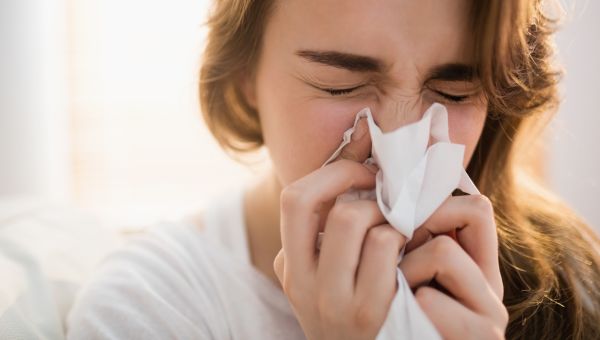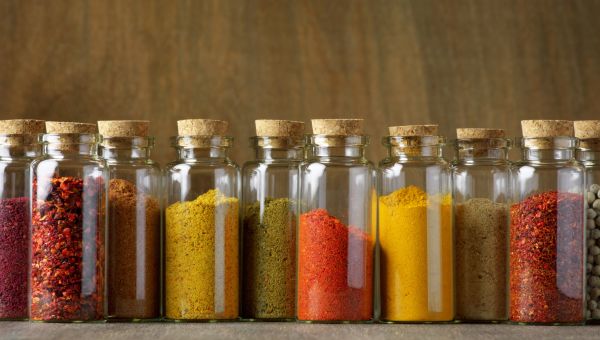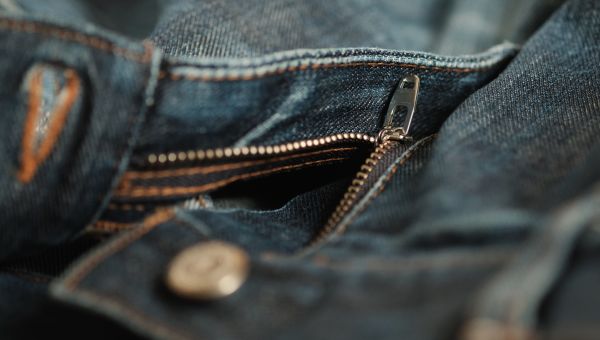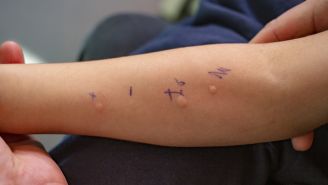5 Surprising Allergy Triggers
Watch out for these unexpected causes of allergy flare-ups.
Updated on July 12, 2023

You might be quick to blame your spring allergy symptoms on pollen, or your year-round allergies on other usual suspects: mold, dust, or pet dander. But something else you might not expect could be the cause of your sneezing, wheezing, and even skin reactions. Watch out for these five surprising allergy triggers.

Spices
When you think of food allergies, shellfish or peanuts probably come to mind. But, less commonly, people may be allergic to spices. Allergic reactions have been reported to cumin, cayenne pepper, coriander seed, and other seasonings—although any spice can trigger a reaction, such as sneezing and trouble breathing.
There are two main ways spices lead to reactions: Either your immune system reacts strongly to a particular protein found in the spice, or you experience something called cross-reactivity. This occurs when you’re allergic to a substance like pollen and your body reacts to other substances that are seemingly unrelated—like avocadoes or apples—because they have a similar chemical structure to the problematic pollen.

Alcohol
Drinking cocktails, liquor, beer, cider, and wine can trigger symptoms in some people. In certain cases, it may indicate an allergy, or a reaction of the immune system. If you have a drink when you have an allergy, it can cause a rash, itchiness, swelling, intense stomach pains, and in rare situations, anaphylaxis (a life-threatening reaction).
In other cases, symptoms might indicate an alcohol intolerance. Unlike an allergy, which is an immune system issue, an alcohol intolerance is a digestive system issue. Your body has problems breaking down alcohol, which can lead to an unpleasant flushing of the face, neck, and chest, as well as intense warmth, a stuffy nose, nausea, vomiting, and a rapid heartbeat, among other issues.

Sperm
You may love your partner, but there’s a chance you could be allergic to a certain part of them. Sperm allergy (or seminal plasma hypersensitivity) is extremely rare, with only about 80 confirmed cases. But researchers think there could be more that go unreported—perhaps around 40,000 in the United States.
This allergy has only been documented in women. The symptoms, which can affect your whole body or just the vagina and vulva, include itching, burning, and swelling. Rarely, people also experience respiratory symptoms, cardiovascular problems, or anaphylaxis.
There’s no evidence that a sperm allergy causes infertility, but it can make conceiving uncomfortable. If you’re trying to get pregnant or just want a more comfortable sex life, a healthcare provider (HCP) can help.

Sun
Not only can too much exposure lead to skin cancer, but for some, it can also cause an allergic reaction. The most common kind of sun allergy (also called photosensitivity), is polymorphous light eruption (PMLE). People with PMLE may develop discolored, itchy patches of bumps or hives on their skin after being exposed to sunlight.
Sometimes, chemicals react with sunlight to create symptoms:
- Phototoxicity occurs when a person uses medication or a product—perhaps lotion or sunscreen—which results in skin being directly damaged when it’s exposed to light.
- Photoallergy occurs when a person takes a medication that increases sensitivity to sunlight, such as tetracycline antibiotics or sulfa-based drugs. A photoallergic reaction is rarer than a phototoxic reaction.
Certain medical conditions, such as systemic lupus erythematosus (SLE or lupus), may also increase sensitivity to sunlight.
The best treatment: Avoid the sun as much as possible, especially midday, between 10 a.m. and 4 p.m. Use sunscreen (including on your lips), choose clothes that cover as much of your skin as possible, and wear UV-blocking sunglasses.

Nickel
About 17 percent of women and 3 percent of men have an allergy to nickel, a metal commonly found in jewelry, watches, zippers, snaps, eyeglasses, and cell phones. The allergy is one of the most common causes of contact dermatitis, which can cause a rash, bumps, or blisters. On darker skin, patches can be dark brown, purple, or gray. On lighter skin, they’re usually pink or red.
The best way to prevent a nickel reaction is to avoid wearing or touching items that contain the metal. You may be able to keep using certain items if you have a barrier between them and your skin. For example, you can put a cover on your phone. You can also apply clear nail polish to jewelry or the back of a wristwatch—but know that you’ll have to regularly reapply it, as it rubs off over time.

American Academy of Allergy, Asthma & Immunology. Can Spices Cause Allergic Reactions? Page last reviewed September 28, 2020.
American Academy of Allergy, Asthma & Immunology. Food Allergy. Accessed on April 14, 2023.
Cox AL, Eigenmann PA, Sicherer SH. Clinical Relevance of Cross-Reactivity in Food Allergy. The Journal of Allergy and Clinical Immunology: In Practice. 2021;9(1):82-99.
American Academy of Allergy, Asthma & Immunology. Possible effect of the ingestion of alcohol on allergic rhinitis. Page last reviewed April 17, 2019.
Cleveland Clinic: Alcohol Intolerance. Last reviewed March 24, 2020.
NIH: Genetic and Rare Diseases Information Center. Acute alcohol sensitivity. Accessed July 11, 2023.
American Academy of Allergy, Asthma & Immunology. Out to Eat with Food Allergies? Don’t Forget About Your Drinks. Page last reviewed September 28, 2020.
UpToDate. Allergic Reactions to Seminal Plasma. Page last updated September 22, 2022.
Harvard Health Publishing. Sun Allergy (Photosensitivity). January 3, 2022.
Mayo Clinic. Sun Allergy. August 20, 2022.
Hofmann GA, Weber B. Drug-induced photosensitivity: culprit drugs, potential mechanisms and clinical consequences. J Dtsch Dermatol Ges. 2021 Jan;19(1):19-29.
Guan LL, Lim HW, Mohammad TF. Recognizing photoallergy, phototoxicity, and immune-mediated photodermatoses. J Allergy Clin Immunol. 2022 Apr;149(4):1206-1209.
Oakley AM, Ramsey ML. Polymorphic Light Eruption. StatPearls. Last updated April 14, 2023.
Skin Cancer Foundation. Photosensitivity & Your Skin. Last updated May 2021.
Merck Manual: Consumer Version. Photosensitivity Reactions. Reviewed January 2022.
Cleveland Clinic. Sun Allergy. Last reviewed May 4, 2022.
Haddad SF, Helm MM, Meath B, et al. Exploring the Incidence, Implications, and Relevance of Metal Allergy to Orthopaedic Surgeons. J Am Acad Orthop Surg Glob Res Rev. 2019 Apr 5;3(4):e023.
American Academy of Dermatology Association. Nickel Allergy: How to Avoid Exposure and Reduce Symptoms. Accessed on April 14, 2023.
Sangha AM. Dermatological Conditions in SKIN OF COLOR: Managing Atopic Dermatitis. J Clin Aesthet Dermatol. 2021 Mar;14(3 Suppl 1):S20-S22.
More On


video

article

slideshow


video


video
